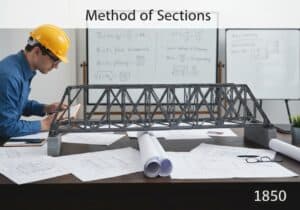The international standard ISO 9241-11 defines usability as the “extent to which a product can be used by specified users to achieve specified goals with effectiveness, efficiency and satisfaction in a specified context of use.” This definition provides a Rahmen for measuring usability by breaking it down into three distinct, quantifiable components, moving beyond purely subjective assessments.
ISO 9241-11 Definition of Usability
- International Organization for Standardization (ISO)
The ISO 9241-11 standard, part of the broader ISO 9241 series on “Ergonomie of human-system interaction,” provided a crucial, formal definition that helped mature the field of usability engineering. Prior to its establishment, “usability” was often used loosely. This standard operationalized the concept into three measurable dimensions. ‘Effectiveness’ refers to the accuracy and completeness with which users achieve specified goals. For example, can a user successfully complete a purchase on an e-commerce site? ‘Efficiency’ relates to the resources expended in relation to the accuracy and completeness with which users achieve goals. This is often measured in terms of time taken or clicks required. ‘Satisfaction’ is the user’s subjective response—their freedom from discomfort and positive attitudes towards the use of the product. It is typically measured using post-test questionnaires. The definition also emphasizes the “specified context of use,” acknowledging that usability is not an absolute, intrinsic quality of a product but is dependent on the specific users, their goals, and the environment (physical, social, technical) in which they operate. This contextual element is critical, as a product highly usable for an expert in a controlled office environment might be unusable for a novice in a distracting, mobile setting. The standard’s framework guides practitioners in setting clear, testable usability goals and evaluating designs against them.
Typ
Unterbrechung
Verwendung
Vorläufersubstanzen
- The field of ergonomics and human factors, which studied human capabilities and limitations in relation to work environments and tools.
- Early work in Software psychology and human-computer interaction from the 1970s and 1980s.
- Brian Shackel’s 1986 definition of usability, which included effectiveness, learnability, flexibility, and attitude.
- The quality management movement (e.g., ISO 9000), which emphasized standardized, measurable definitions of quality.
Anwendungen
- development of usability testing metrics
- standardized reporting in product evaluations
- legal and contractual requirements for software procurement
- integration into nutzerzentriert design processes
- certification of product quality
Patente:
Mögliche Innovationsideen
!Professionals (100% free) Mitgliedschaft erforderlich
Sie müssen ein Professionals (100% free) Mitglied sein, um auf diesen Inhalt zugreifen zu können.
VERFÜGBAR FÜR NEUE HERAUSFORDERUNGEN
Maschinenbauingenieur, Projekt-, Verfahrenstechnik- oder F&E-Manager
Kurzfristig für eine neue Herausforderung verfügbar.
Kontaktieren Sie mich auf LinkedIn
Integration von Kunststoff-Metall-Elektronik, Design-to-Cost, GMP, Ergonomie, Geräte und Verbrauchsmaterialien in mittleren bis hohen Stückzahlen, Lean Manufacturing, regulierte Branchen, CE und FDA, CAD, Solidworks, Lean Sigma Black Belt, medizinische ISO 13485
Wir suchen einen neuen Sponsor
Ihr Unternehmen oder Ihre Institution beschäftigt sich mit Technik, Wissenschaft oder Forschung?
> Senden Sie uns eine Nachricht <
Erhalten Sie alle neuen Artikel
Kostenlos, kein Spam, E-Mail wird nicht verteilt oder weiterverkauft
oder Sie können eine kostenlose Vollmitgliedschaft erwerben, um auf alle eingeschränkten Inhalte zuzugreifen >Hier<
Verwandte Erfindungen, Innovationen und technische Prinzipien













